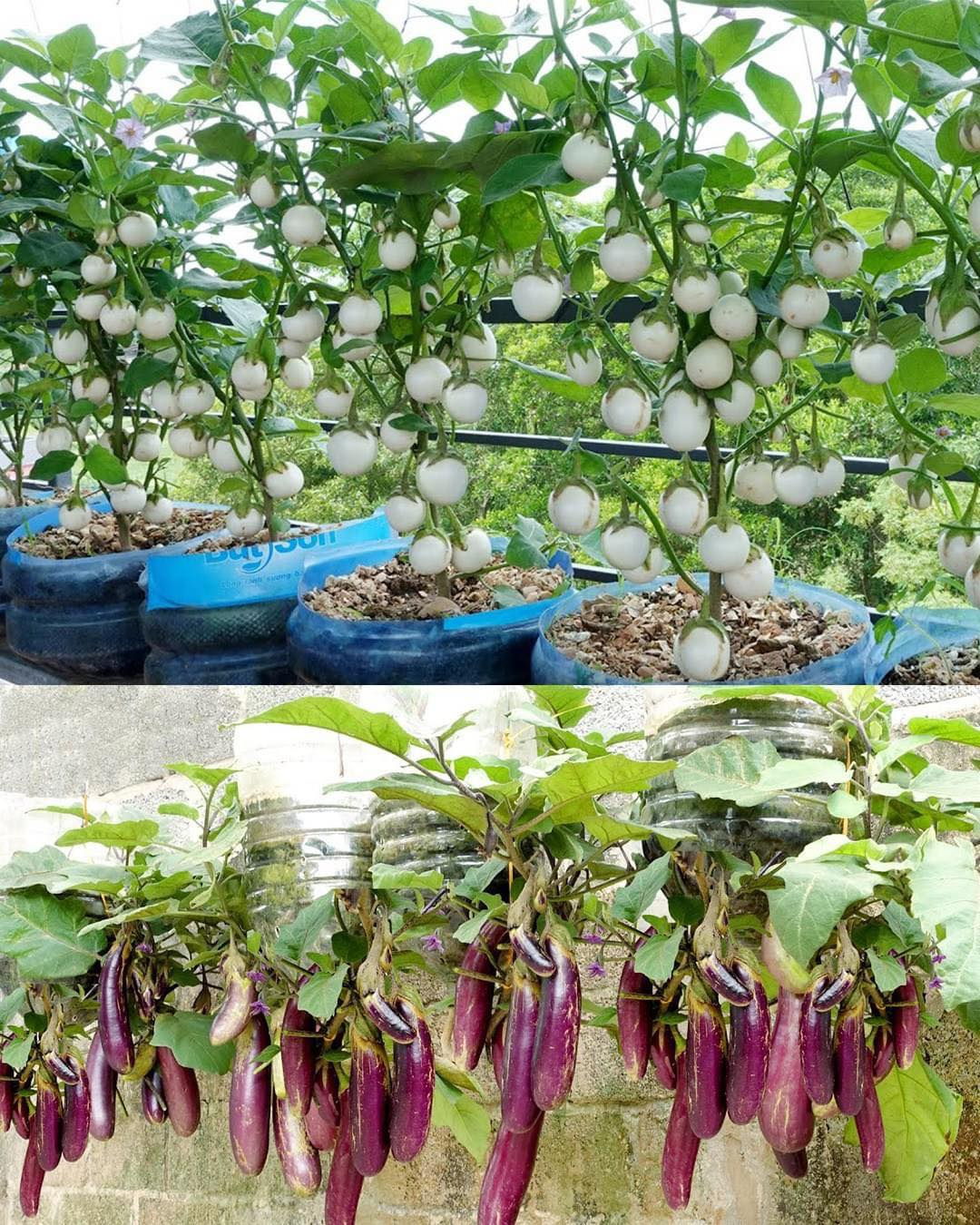
Growing eggplant from seeds in a pot or container is indeed straightforward and rewarding. Here’s a step-by-step guide to help you grow eggplants successfully in pots or containers:
Step-by-Step Guide to Growing Eggplant in Containers:
1. Choosing a Container:
- Select a large container with drainage holes. Eggplants have deep root systems, so choose a container that is at least 12-18 inches (30-45 cm) deep and wide enough to accommodate the mature size of the plant (typically 18-24 inches or 45-60 cm in diameter).
2. Selecting Eggplant Seeds:
- Choose high-quality eggplant seeds from a reputable supplier or use seeds saved from a previous harvest. Popular varieties for containers include ‘Black Beauty,’ ‘Ichiban,’ and ‘Container Pick.’
3. Preparing the Potting Mix:
- Use a well-draining potting mix suitable for vegetables. You can mix equal parts of peat moss, perlite, and compost to create a nutrient-rich growing medium.
4. Planting Eggplant Seeds:
- Fill the container with the potting mix, leaving about 1-2 inches (2.5-5 cm) from the rim. Moisten the soil lightly before planting.
- Plant 2-3 eggplant seeds per container, spacing them evenly. Press the seeds into the soil to a depth of about 1/4 to 1/2 inch (0.6-1.3 cm).
- Cover the seeds lightly with soil and gently water again.
5. Placement and Sunlight:
- Place the container in a sunny location where the eggplants will receive at least 6-8 hours of direct sunlight daily. Eggplants thrive in full sun.
6. Watering:
- Keep the soil consistently moist but not waterlogged. Water thoroughly whenever the top inch (2.5 cm) of soil feels dry.
- Avoid overhead watering to prevent fungal diseases. Water at the base of the plant instead.
7. Fertilizing:
- After the seedlings have developed their first true leaves (about 3-4 weeks after germination), feed them with a balanced fertilizer or organic fertilizer diluted to half-strength. Repeat every 3-4 weeks during the growing season.
8. Supporting the Plants:
- Eggplants may benefit from staking or using a cage for support as they grow. This helps prevent the heavy fruit from weighing down the plant.
9. Thinning Seedlings:
- Once seedlings have developed 2-3 true leaves, thin them to leave the strongest seedling per container. This ensures adequate space and nutrients for optimal growth.
10. Pest and Disease Management:
- Monitor plants regularly for pests like aphids, spider mites, and flea beetles. Use insecticidal soap or neem oil if pests become problematic.
- Practice crop rotation and maintain good air circulation to reduce the risk of fungal diseases.
11. Harvesting Eggplants:
- Harvest eggplants when they reach their mature size and have a glossy, firm skin. Use pruning shears or a knife to cut the fruit from the plant, leaving a short stem attached.
Additional Tips:
- Pollination: Eggplants are self-pollinating, but gentle shaking or using a small brush to transfer pollen between flowers can increase fruit set.
- Temperature: Eggplants prefer warm temperatures (70-85°F or 21-29°C) and may benefit from a warm microclimate in cooler regions.
- Overwintering: In colder climates, bring container-grown eggplants indoors before the first frost. Provide adequate light and warmth during winter months.
By following these steps and tips, you can successfully grow eggplants from seeds in containers, enjoying a bountiful harvest of this versatile vegetable for your culinary delights. Happy gardening!
